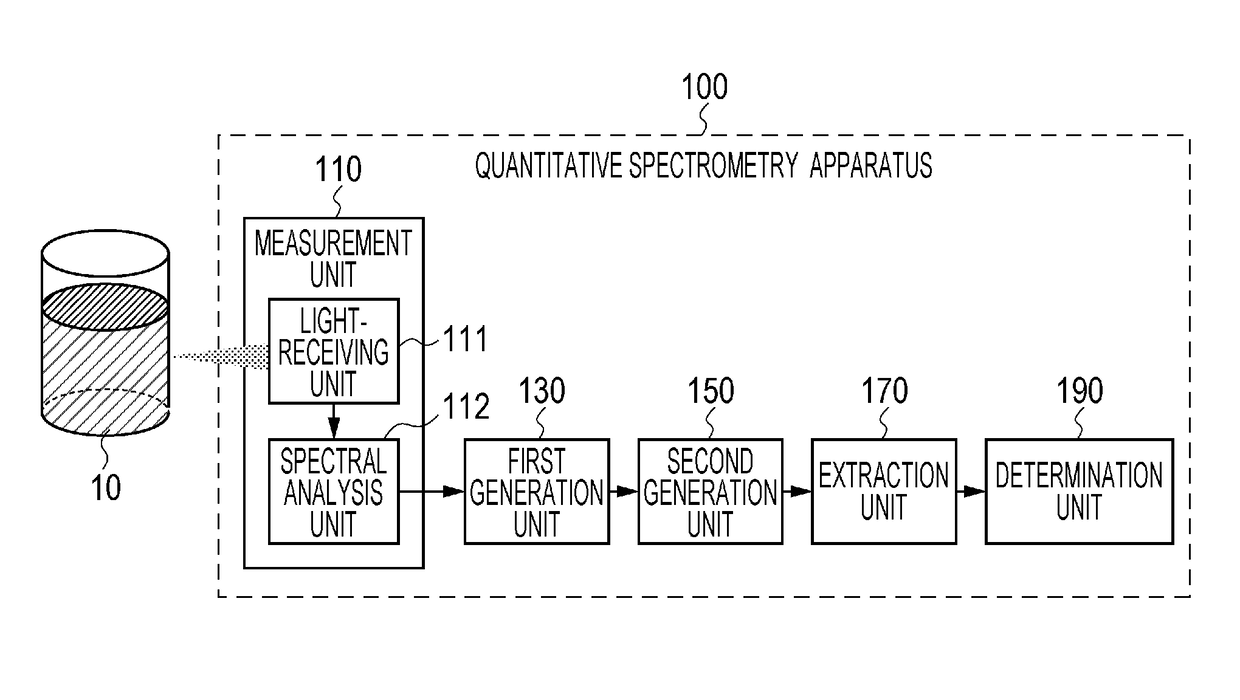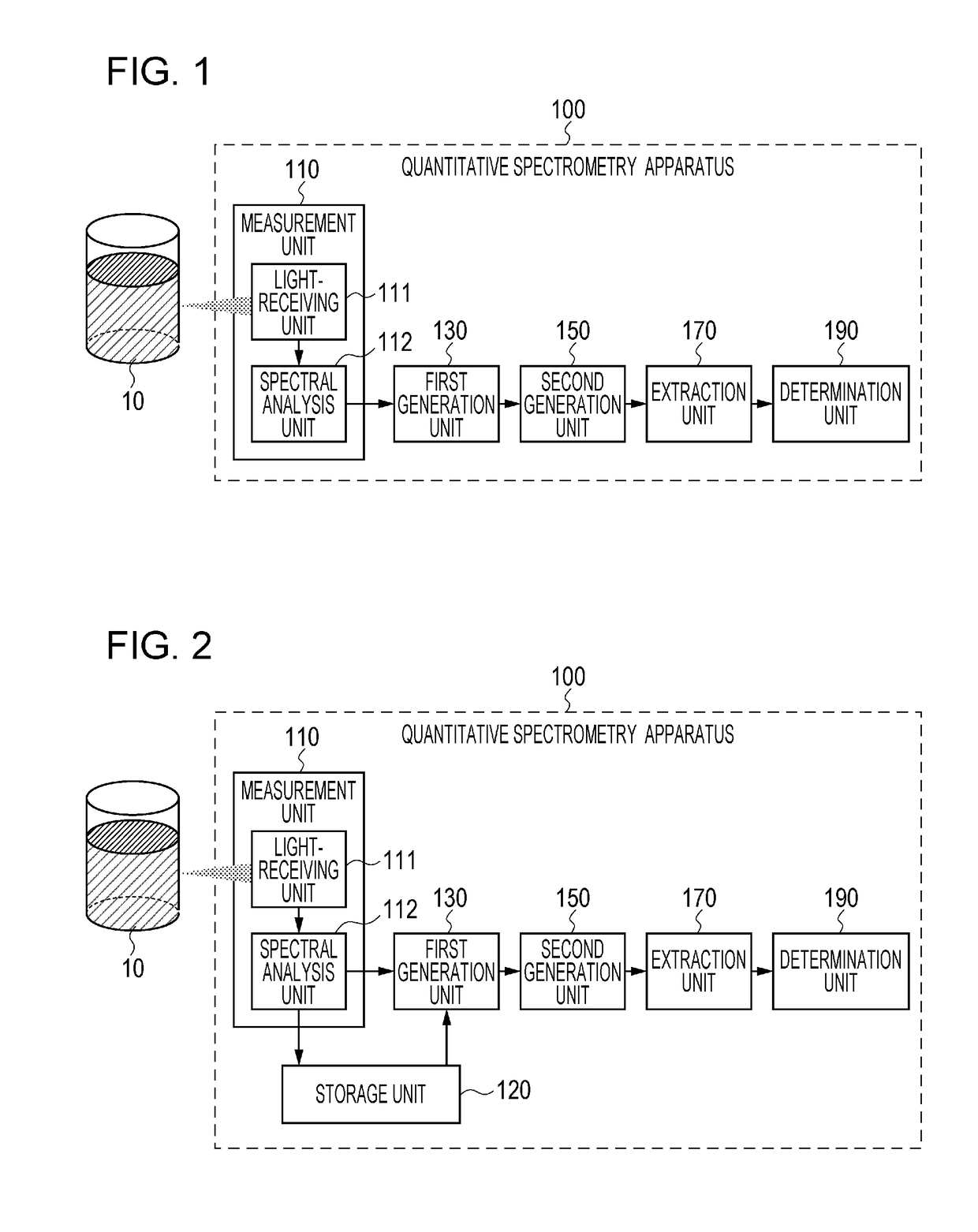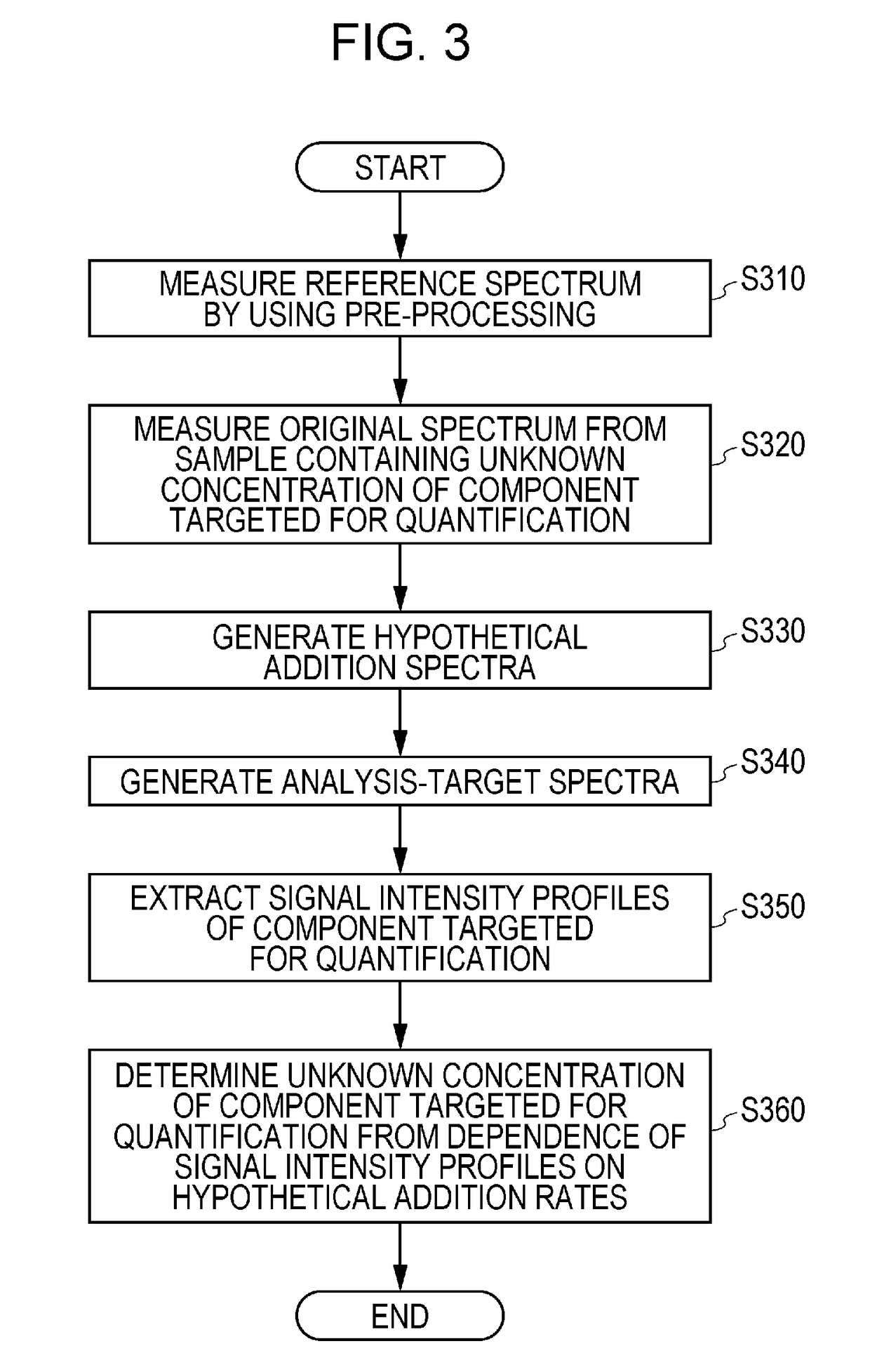Method for quantitative spectrometry, quantitative spectrometry apparatus, and program
a quantitative spectrometry and apparatus technology, applied in the direction of fluorescence/phosphorescence, analysis by material excitation, instruments, etc., can solve the problems of a large amount of work, a comparatively long time, and the drawback of existing standard addition methods, which is typically difficult to apply when the sample is large, and achieves the effect of effective us
- Summary
- Abstract
- Description
- Claims
- Application Information
AI Technical Summary
Benefits of technology
Problems solved by technology
Method used
Image
Examples
example 1
[0032]Example 1 of the present invention will be described with reference to FIGS. 1 to 10. FIG. 1 is a system diagram illustrating a configuration of a quantitative spectroscopic apparatus 100 according to Example 1 of the present invention. An analysis-target sample 10 is illustrated in the left part of FIG. 1. The analysis-target sample 10 is, for example, an aqueous mixed solution of glucose, sucrose, and fructose. Among them, in Example 1, glucose is assumed to be a component targeted for quantification whose composition ratio (concentration) is unknown. In order to assess the effect of Example 1 (a determination error of the unknown concentration based on the present invention), the analysis-target sample 10 is prepared with a glucose concentration true value of 1.05% and the following steps are performed assuming that the true value is unknown.
[0033]The quantitative spectroscopic apparatus 100 includes configuration elements within an area enclosed by a dashed line in FIG. 1....
example 2
[0068]Example 2 of the present invention will be described with reference to FIGS. 11 to 14. Example 2 provides enumeration of results of applying a method similar to that in Example 1 to a plurality of other types of mixtures (solutions) by using the same quantitative spectrometry apparatus 100 as that described in Example 1 to determine the concentrations of components targeted for quantification. In the following spectral diagrams, the vertical and horizontal axes correspond to those in FIGS. 5 to 8 and 10, except for the range of values.
[0069]FIG. 11 is a diagram illustrating results of analysis using an aqueous amino acid solution as an analysis-target sample (decomposition into a spectrum derived from a component targeted for quantification and a spectrum derived from a component not targeted for quantification). The respective line types representing the individual spectra are distinguishable in the same way as in FIG. 10. Components in the aqueous amino acid solution and the...
example 3
[0077]Example 3 of the present invention will be described with reference to FIGS. 15 and 16. Example 3 provides enumeration of results of applying a method similar to that in Example 1 to a plurality of other types of mixtures (solids or gases) by using the same quantitative spectrometry apparatus 100 as that described in Example 1 to determine the composition ratios of components targeted for quantification. In the following spectral diagrams, the vertical and horizontal axes correspond to those in FIGS. 5 to 8 and 10, except for the range of values.
[0078]FIG. 15 is a diagram illustrating results of analysis similar to those in FIG. 11 using a multivitamin tablet as an analysis-target sample. The respective line types representing the individual spectra are distinguishable in the same way as in FIGS. 10 and 11. The nominal value of the composition ratio of vitamin C, which was used as a component targeted for quantification, in the tablet is 80 mg per tablet (280 mg).
[0079]By cont...
PUM
| Property | Measurement | Unit |
|---|---|---|
| concentrations | aaaaa | aaaaa |
| concentrations | aaaaa | aaaaa |
| concentrations | aaaaa | aaaaa |
Abstract
Description
Claims
Application Information
 Login to View More
Login to View More - R&D
- Intellectual Property
- Life Sciences
- Materials
- Tech Scout
- Unparalleled Data Quality
- Higher Quality Content
- 60% Fewer Hallucinations
Browse by: Latest US Patents, China's latest patents, Technical Efficacy Thesaurus, Application Domain, Technology Topic, Popular Technical Reports.
© 2025 PatSnap. All rights reserved.Legal|Privacy policy|Modern Slavery Act Transparency Statement|Sitemap|About US| Contact US: help@patsnap.com



